How to Transition from DevOps to Site Reliability Engineering (SRE)
- Nitin Yadav
- Knowledge
About
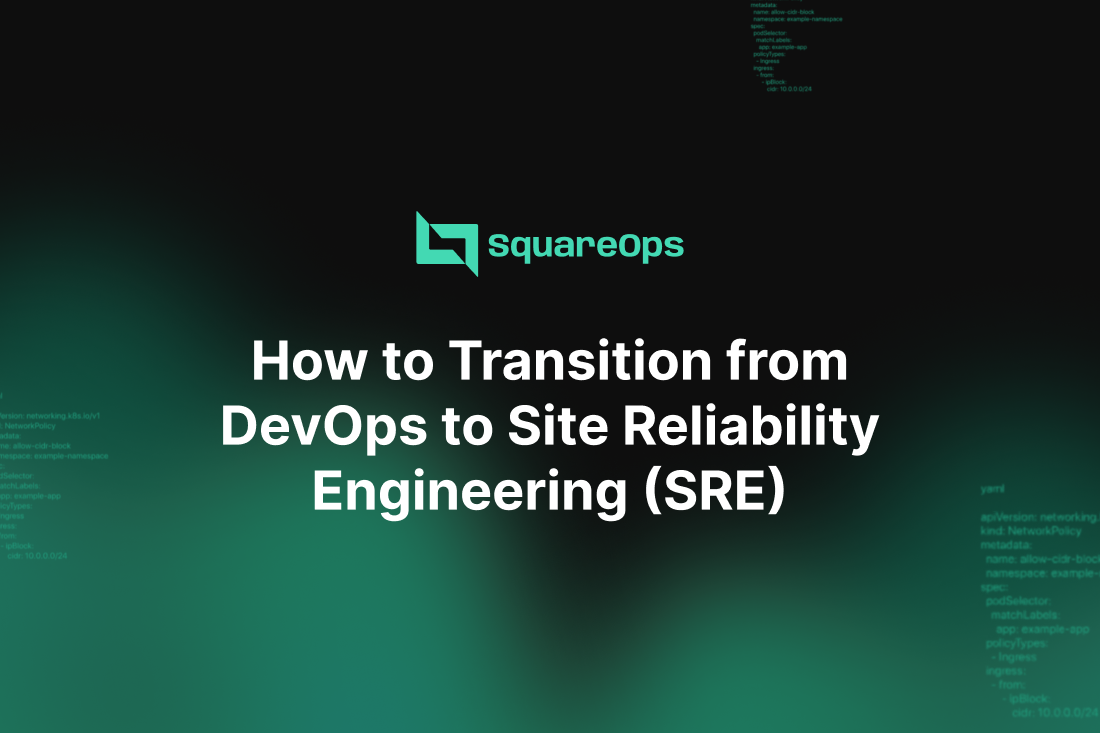
Learn how to transition from DevOps to Site Reliability Engineering (SRE) in 2025. Understand key differences, best practices, tools, and how SquareOps makes it seamless.
Industries
- AWS, CI/CD Pipelines, DevOps, Devops Service Provider, SquareOps
Share Via
Introduction
DevOps revolutionized software development by bridging the gap between development and operations, enabling faster delivery, automation, and collaboration. However, as systems grow more complex and always-on user expectations increase, teams are realizing that DevOps alone may not be enough to ensure the reliability, scalability, and performance of services.
This is where Site Reliability Engineering (SRE) comes in. Originally introduced by Google, SRE builds upon DevOps principles with a specific focus on system reliability, observability, and performance management. Transitioning from DevOps to SRE isn’t about replacing one framework with another—it’s about evolving your engineering culture to manage complexity and scale efficiently.
This guide will help you:
- Understand the difference between Site Reliability Engineer vs DevOps
- Identify when and why to transition to SRE
- Explore key practices, roles, tools, and cultural shifts
See how SquareOps helps companies bridge the gap effectively
Site Reliability Engineer vs DevOps: Key Differences
Aspect | DevOps | Site Reliability Engineering (SRE) |
Primary Focus | Speed, automation, collaboration | Reliability, uptime, observability |
Approach | Methodology/Culture | Engineering discipline |
Metrics | Deployment frequency, lead time | SLIs, SLOs, error budgets |
Tooling | CI/CD, IaC, monitoring tools | Monitoring, tracing, chaos engineering |
Incident Handling | Shared responsibility | Structured, blameless post-mortems |
Toil Management | Not always formalized | Critical metric to reduce via automation |
While both practices aim to deliver high-quality software efficiently, SRE applies software engineering principles to infrastructure and operations with a focus on system health.
When Should You Transition to SRE?
You may benefit from transitioning to SRE when:
- Downtime costs are rising (lost revenue, reputation damage)
- Your system involves multiple microservices or regions
- You have growing incident frequency or MTTR
- You’re struggling to meet SLAs
- There’s no clear accountability for performance/reliability
SRE brings formalization, structure, and proactive reliability engineering—crucial as systems become more complex.
Step-by-Step Guide to Transition from DevOps to SRE
1. Assess Your Current DevOps Maturity
Start with a baseline audit:
- How automated are your deployments?
- Do you have incident response playbooks?
- Are you measuring uptime, latency, and error rates?
Tools: DevOps maturity models, DORA metrics analysis
2. Introduce SLIs, SLOs, and Error Budgets
These are foundational to SRE practice:
- SLIs (Indicators): e.g., latency, availability
- SLOs (Objectives): targets like “99.95% uptime/month”
- Error Budgets: acceptable threshold for failure that guides release decisions
3. Build an Observability Stack
DevOps often has basic monitoring; SREs need:
- Metrics (Prometheus, Datadog)
- Logs (ELK Stack, Loki)
- Traces (Jaeger, OpenTelemetry)
This data enables real-time insights and root cause analysis.
4. Reduce Toil with Automation
SREs define “toil” as repetitive, manual work that doesn’t scale:
- Automate tasks like rollbacks, patching, backups, provisioning
- Use Infrastructure as Code (Terraform, Pulumi)
- Introduce self-healing systems and auto-remediation
5. Implement Incident Management Frameworks
Formalize:
- On-call rotations
- Alerting thresholds
- Blameless post-incident reviews
Use tools like PagerDuty, Opsgenie, and StatusPage.
6. Invest in Performance Testing & Chaos Engineering
SREs proactively simulate failure:
- Load tests with JMeter, k6
- Chaos experiments with Gremlin, Chaos Monkey
Helps teams validate reliability under stress.
7. Hire or Train SRE Roles
You can:
- Upskill DevOps engineers to learn SRE practices
- Hire dedicated SREs for mission-critical services
- Partner with providers like SquareOps for embedded or fractional SRE support
8. Foster an SRE Culture
Key traits:
- Shared responsibility for reliability
- Metrics over intuition
- Blamelessness over finger-pointing
- Learning from failure as a team sport
Tools to Support SRE Practices
Category | Tools |
Monitoring | Prometheus, Datadog, CloudWatch |
Logging | ELK Stack, Loki, Fluentd |
Tracing | Jaeger, Zipkin, OpenTelemetry |
Automation | Terraform, Ansible, Jenkins |
Incident Response | PagerDuty, Opsgenie, StatusPage |
Chaos Engineering | Gremlin, Litmus, Chaos Monkey |
Alerting | Grafana, Alertmanager, Sentry |
Benefits of Transitioning to SRE
- Improved Uptime: Measurable reliability improvements
- Better Incident Response: Faster MTTR through structured playbooks
- Smarter Releases: Error budgets improve stability before launch
- Scalable Ops: Automation reduces manual errors and effort
Customer Trust: Reliable systems build user confidence
How SquareOps Helps Businesses Evolve from DevOps to SRE
At SquareOps, we help organizations:
- Audit their current DevOps maturity
- Define and implement SLIs, SLOs, and error budgets
- Deploy observability stacks with dashboards and alerts
- Run chaos engineering and load testing exercises
- Train teams in SRE best practices or provide on-demand SREs
Whether you’re scaling fast or need help preparing for enterprise compliance, our cloud-native SRE experts will bridge your team’s skill gap.
Conclusion
Transitioning from DevOps to Site Reliability Engineering is a strategic evolution, not a disruption. As systems grow in complexity and users expect 24/7 availability, SRE brings the discipline, metrics, and culture needed to scale safely and reliably.
With SquareOps, you get expert SREs and proven frameworks to make this transition smooth and impactful—whether you need fractional support, project-based help, or full-stack reliability management.
Ready to bring reliability to the heart of your engineering? Let’s build your SRE foundation together.
Frequently asked questions
DevOps is a cultural philosophy focused on speed and collaboration. SRE adds engineering rigor to reliability, observability, and automation.
Yes. Many companies run DevOps for delivery and SRE for reliability.
They quantify expectations and guide engineering effort. If SLOs are missed, reliability becomes the priority over new features.
No. Upskill or augment them with SRE roles and practices.
Industry average is 1:10 to 1:15 depending on system complexity.
You can see impact in 4–6 weeks with the right support.
Manual, repetitive work that doesn’t scale. SREs aim to automate it.
SREs use structured on-call systems and blameless retrospectives to continuously improve.
No. Even startups with high uptime needs benefit from SRE.
Contact us at squareops.com to get an audit or trial engagement.
Related Posts
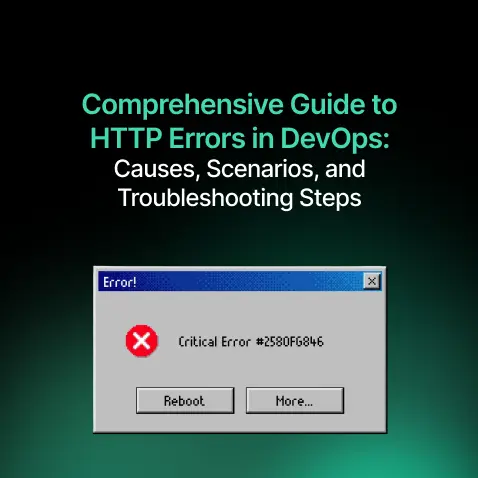
Comprehensive Guide to HTTP Errors in DevOps: Causes, Scenarios, and Troubleshooting Steps
- Blog

Trivy: The Ultimate Open-Source Tool for Container Vulnerability Scanning and SBOM Generation
- Blog
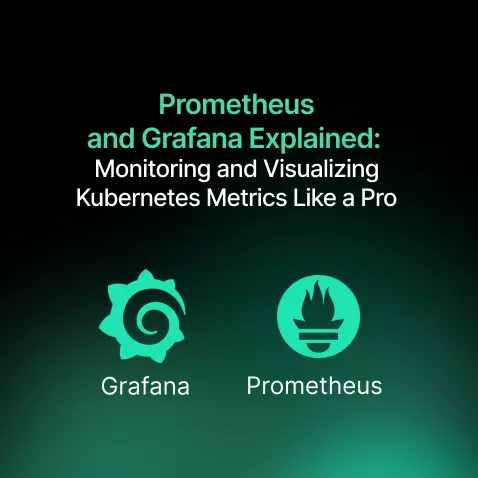
Prometheus and Grafana Explained: Monitoring and Visualizing Kubernetes Metrics Like a Pro
- Blog
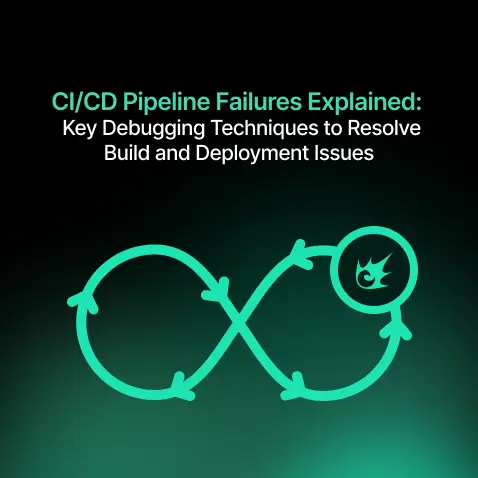
CI/CD Pipeline Failures Explained: Key Debugging Techniques to Resolve Build and Deployment Issues
- Blog
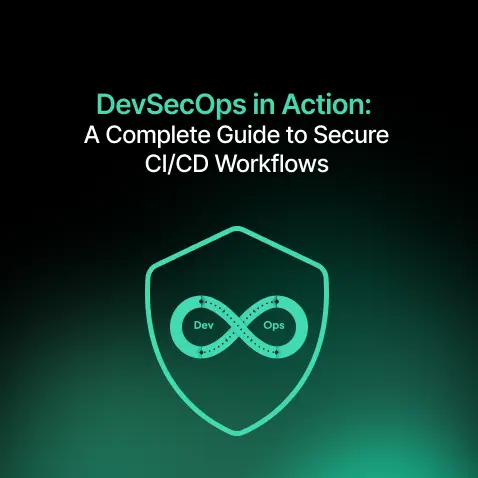
DevSecOps in Action: A Complete Guide to Secure CI/CD Workflows
- Blog

AWS WAF Explained: Protect Your APIs with Smart Rate Limiting
- Blog

